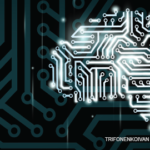I looked at the joints. They spoke back to me—”I need more humanism,” they whispered.
To longtime readers, those two sentences may sound both familiar and alien, perhaps even a little humorous. That’s because those sentences were generated entirely by a computer using artificial intelligence (AI). It was simple, too: I just copied the text of 120 previous Rheuminations columns and entered them into a freely accessible, online AI software program (GPT-3).1 Nine lines of code and two clicks later, the computer “wrote” an entirely new, fantastical 1,067-word article.
Rheuminations columns are only the beginning of the AI revolution. Artificial intelligence, to those who may be unaware, is “the capacity of a computer to perform operations and tasks analogous to learning and decision making in humans.”2 AI is doing things, such as reading X-rays and diagnosing skin cancers, that we thought previously impossible for unsupervised machines to do.3,4
As AI becomes more precise and reliable, there is no question that AI will have profound effects on the field of rheumatology, from direct clinical service to education, research and beyond. Should we be excited—or worried? Let’s rheuminate.
Reality Check
It’s not just the intelligence that is artificial.
Before we explore how rheumatology professionals see AI, it may be worthwhile to investigate how AI views rheumatology professionals. To do so, let’s visit an AI engine called DALL-E mini.5
DALL-E mini is AI software that creates totally new pictures based on what it has learned from a gigantic database of images. When I typed in “rheumatologist,” I was excited to see that DALL-E mini had generated nine pictures of white-coat-clad rheumatologists palpating various joints. But this excitement turned to worry as I realized that each blurry-faced virtual rheumatologist was, as far as I could tell, white and male. Even after resubmitting five times, not a single non-white or non-male rheumatologist showed up in the 45 images.
It’s a great example of how AI can mimic not only our intelligence but the foolishness of our societal biases.6 Indeed, without strict scrutiny, implementation of AI can entrench societal divides and injustices. Rheumatologists, along with other clinicians and patients, need to engage with computer scientists to ensure that AI software not only mimics our collective thought patterns, but also upholds our collective values, such as diversity, equity and inclusion.
Error 404
Patient not found
This quick example with DALL-E demonstrates that AI may amplify known, existing biases. Yet AI can also generate new biases that we could not have even imagined before. Rheumatology is a field whose practice demands a sense of humility and creativity, something that cannot, at this time, be easily coded into machines. Our classification criteria are not meant to be unfailing algorithms for machines to faithfully implement; as such, a degree of misclassification is inevitable.7 Moreover, we still don’t quite understand the immunopathogenesis of many diseases and make several assumptions to fill in those gaps. Therefore, asking AI to engage in diagnostic decision making based on these assumptions without stringent external validation may lead to unforeseen harms.8


